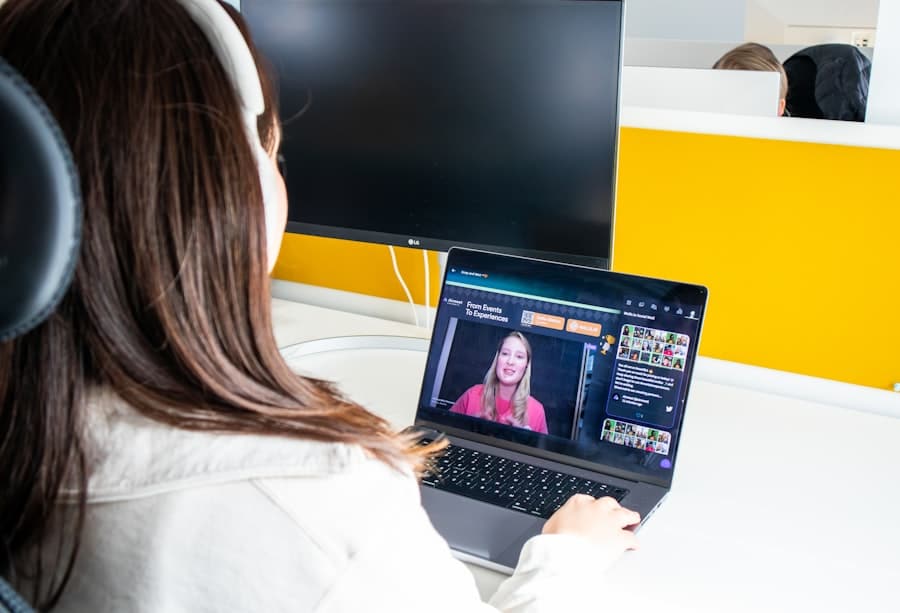Remote learning has emerged as a pivotal educational approach, particularly in the wake of the COVID-19 pandemic, which forced educational institutions worldwide to adapt rapidly to new teaching modalities. In rural communities, where geographical isolation and limited access to resources often pose significant barriers to education, remote learning presents both opportunities and challenges. The shift from traditional classroom settings to online platforms has the potential to bridge educational gaps, providing students with access to a broader range of resources and learning experiences.
However, the effectiveness of remote learning in these areas is contingent upon various factors, including technological infrastructure, community engagement, and the adaptability of educational practices. In rural settings, the implementation of remote learning can be transformative. It allows students to connect with educators and peers beyond their immediate environment, fostering a sense of belonging and collaboration that may not be possible in isolated communities.
Moreover, remote learning can facilitate personalized education, enabling students to learn at their own pace and explore subjects that align with their interests and career aspirations. However, the transition to this model is not without its complexities, as many rural areas face unique challenges that can hinder the successful adoption of remote learning initiatives.
Key Takeaways
- Remote learning in rural communities presents unique challenges due to limited access to technology and internet connectivity.
- Challenges faced by rural communities in implementing remote learning include lack of infrastructure, limited resources, and difficulty in engaging students.
- A successful case study of remote learning in a rural community highlights the importance of community involvement, innovative use of technology, and personalized support for students.
- Strategies and resources utilized for remote learning success in rural communities include mobile learning labs, community partnerships, and leveraging existing infrastructure.
- The impact of remote learning on students and teachers in rural communities includes increased access to educational resources, improved digital literacy, and the need for ongoing support and professional development.
- Lessons learned and best practices for remote learning in rural communities emphasize the importance of flexibility, personalized learning plans, and ongoing communication with students and families.
- Recommendations for improving remote learning in rural communities include investing in infrastructure, expanding broadband access, and providing professional development for educators.
- The future of remote learning in rural communities will require continued collaboration, investment in technology, and a focus on equity and access for all students.
Challenges Faced by Rural Communities in Implementing Remote Learning
One of the most significant challenges faced by rural communities in implementing remote learning is the lack of reliable internet access. Many rural areas are characterized by limited broadband infrastructure, which can severely restrict students’ ability to participate in online classes or access digital resources. According to the Federal Communications Commission (FCC), approximately 14 million Americans lack access to high-speed internet, with a disproportionate number residing in rural regions.
This digital divide not only affects students’ ability to engage with their coursework but also limits their exposure to essential online tools and resources that are increasingly integral to modern education. In addition to connectivity issues, rural communities often grapple with a shortage of technological devices necessary for remote learning. While many urban schools have been able to provide students with laptops or tablets, rural districts may lack the funding or resources to equip their students adequately.
This disparity can lead to inequities in educational opportunities, as students without access to devices may fall behind their peers. Furthermore, even when devices are available, there may be a lack of technical support for both students and teachers, complicating the implementation of remote learning programs.
Case Study of a Successful Remote Learning Program in a Rural Community

A notable example of a successful remote learning program in a rural community can be found in the small town of Harlan, Kentucky. Faced with the challenges of limited internet access and a lack of technological resources, the Harlan Independent School District (HISD) implemented an innovative approach to remote learning that leveraged community partnerships and local resources. Recognizing that many families lacked reliable internet at home, HISD established “Wi-Fi hotspots” throughout the community, including local parks and community centers, where students could access high-speed internet safely.
In addition to addressing connectivity issues, HISD prioritized professional development for teachers to ensure they were equipped with the skills necessary to deliver effective remote instruction. The district organized training sessions focused on utilizing digital platforms for teaching and engaging students in an online environment. This investment in teacher training not only enhanced instructional quality but also fostered a culture of collaboration among educators as they shared best practices and resources.
As a result, HISD saw significant improvements in student engagement and academic performance during the transition to remote learning.
Strategies and Resources Utilized for Remote Learning Success
To achieve success in remote learning, rural communities have employed various strategies and resources tailored to their unique circumstances. One effective strategy is the establishment of partnerships with local organizations and businesses that can provide support in terms of technology and resources. For instance, some schools have collaborated with local libraries to create “tech lending” programs, allowing students to borrow devices for home use.
These partnerships not only enhance access to technology but also foster community involvement in education. Another critical resource for successful remote learning is the development of comprehensive online curricula that are accessible and engaging for students. Many rural schools have turned to educational platforms that offer interactive lessons and assessments aligned with state standards.
These platforms often include features such as video tutorials, discussion forums, and gamified learning experiences that cater to diverse learning styles. By utilizing these resources, educators can create a more dynamic and inclusive remote learning environment that keeps students motivated and engaged.
Impact of Remote Learning on Students and Teachers in Rural Communities
The impact of remote learning on students in rural communities has been multifaceted. On one hand, many students have benefited from the flexibility that remote learning offers, allowing them to balance their studies with other responsibilities such as work or family obligations. This flexibility can be particularly advantageous for older students who may be juggling part-time jobs or caring for younger siblings.
Additionally, remote learning has provided opportunities for students to develop essential digital literacy skills that are increasingly important in today’s job market. However, the transition to remote learning has also presented challenges for both students and teachers. Many educators have reported feelings of isolation and disconnection from their students due to the lack of face-to-face interaction.
This can make it difficult for teachers to gauge student understanding and provide timely feedback. Furthermore, some students may struggle with self-motivation and time management when learning remotely, leading to decreased engagement and academic performance.
Lessons Learned and Best Practices for Remote Learning in Rural Communities

The experiences of rural communities during the shift to remote learning have yielded valuable lessons that can inform future educational practices. One key takeaway is the importance of building strong relationships between educators, students, and families. Effective communication is essential for fostering a supportive learning environment, particularly when face-to-face interactions are limited.
Schools that have prioritized regular check-ins with families and provided clear guidance on how to navigate remote learning have seen higher levels of engagement from both students and parents.
Rural educators have learned that a one-size-fits-all model does not work effectively in diverse communities with varying levels of access to technology and resources.
By offering a mix of synchronous (live) and asynchronous (recorded) lessons, teachers can accommodate different learning styles and schedules. Additionally, incorporating hands-on activities or project-based learning can help maintain student interest and provide practical applications for the concepts being taught.
Recommendations for Improving Remote Learning in Rural Communities
To enhance the effectiveness of remote learning in rural communities, several recommendations can be made based on current challenges and successes observed across various districts. First and foremost, increasing investment in broadband infrastructure is crucial. Policymakers should prioritize initiatives aimed at expanding high-speed internet access in underserved areas, ensuring that all students have the connectivity needed for effective remote learning.
Furthermore, schools should consider implementing hybrid models that combine in-person instruction with remote learning components. This approach allows for greater flexibility while still providing opportunities for social interaction among students and teachers. Additionally, ongoing professional development for educators is essential; training should focus not only on technology use but also on strategies for fostering student engagement and supporting mental health during remote instruction.
The Future of Remote Learning in Rural Communities
As we look toward the future of education in rural communities, it is clear that remote learning will continue to play a significant role in shaping educational experiences. While challenges remain, the lessons learned from recent experiences can guide improvements and innovations in teaching practices. By prioritizing connectivity, fostering community partnerships, and investing in professional development for educators, rural schools can create more equitable and effective remote learning environments.
The potential for remote learning to enhance educational opportunities in rural areas is immense; it can serve as a bridge connecting students with resources and experiences that were previously out of reach. As technology continues to evolve and become more integrated into everyday life, rural communities must embrace these changes while remaining mindful of their unique needs and circumstances. The future of remote learning holds promise for creating more inclusive educational landscapes where all students have the opportunity to thrive.
In exploring the success of remote learning in rural communities, it’s essential to consider the tools that facilitate effective online education. A related article that complements this case study is Best Software for Presentation in 2023. This article provides insights into the latest presentation software that can enhance virtual teaching and learning experiences, making it particularly relevant for educators seeking to engage students in remote settings. By utilizing advanced presentation tools, teachers can create more interactive and visually appealing lessons, which can significantly improve student engagement and comprehension in rural areas where traditional resources may be limited.
FAQs
What is remote learning?
Remote learning refers to the process of education being delivered to students who are not physically present in a traditional classroom setting. This can be done through online platforms, video conferencing, or other digital tools.
What are rural communities?
Rural communities are areas that are located outside of urban and suburban areas, typically characterized by a lower population density and a focus on agriculture or natural resources.
What are the challenges of remote learning in rural communities?
Challenges of remote learning in rural communities can include limited access to high-speed internet, lack of technological resources, and distance from educational institutions.
How have rural communities found success in remote learning?
Rural communities have found success in remote learning through initiatives such as investing in infrastructure for high-speed internet, providing students with necessary technology, and implementing creative solutions for distance learning.
What are some examples of successful remote learning in rural communities?
Examples of successful remote learning in rural communities include partnerships with local businesses to provide internet access, mobile learning centers, and innovative use of educational technology to engage students.

